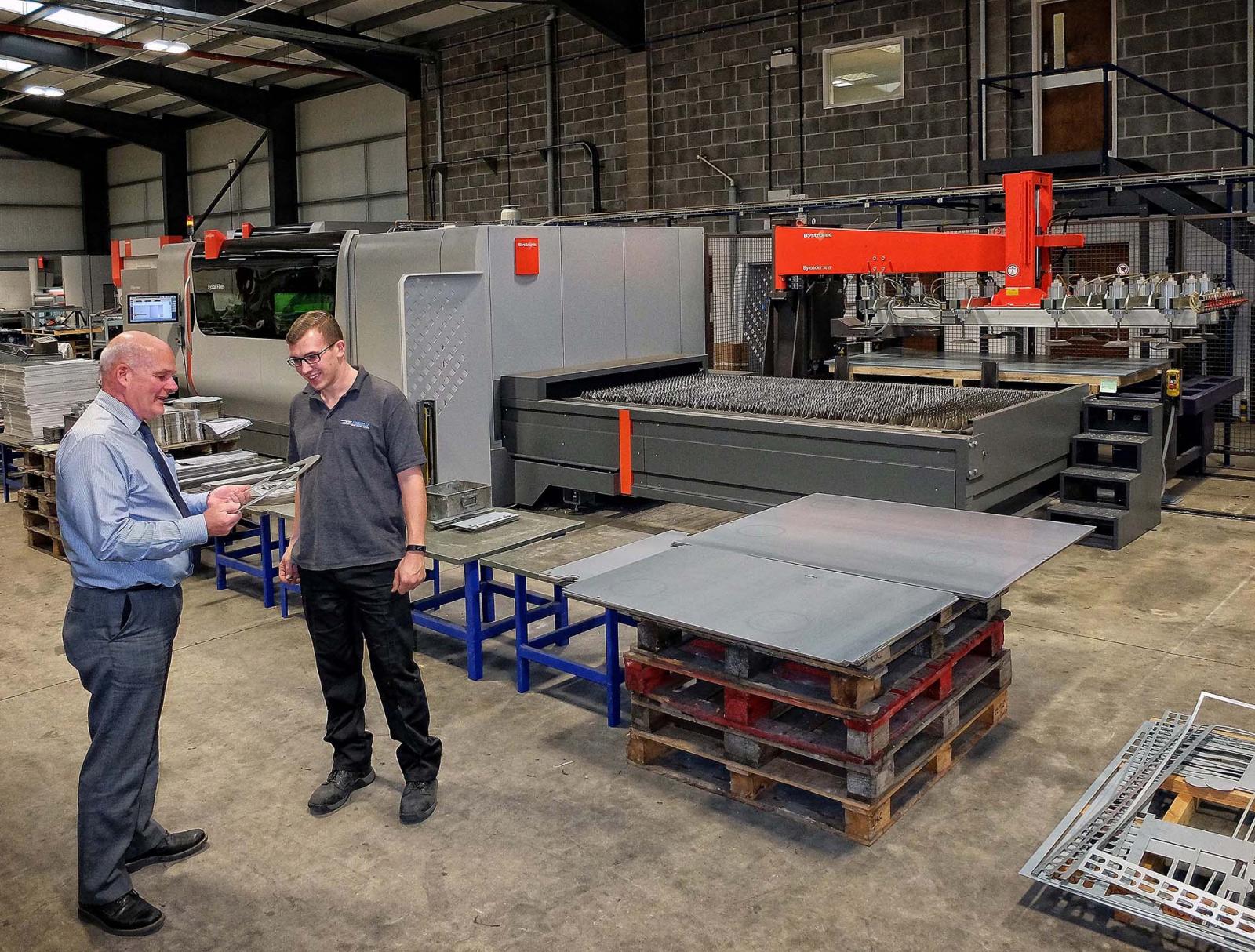
Bridport-based sheet metal subcontractor Ackerman Engineering has phased out its CO2 machine and is now focused on fibre laser cutting.
In August 2018 a 4.4 kW CO2 machine was part-exchanged for a Bystronic ByStar Fiber 8 kW fibre laser cutting centre, which joined a 3 kW BySprint Fiber installed four years earlier. Both are of 3 m x 1.5 m sheet capacity. At the same time, a Bystronic Xpert 150-tonne, 3.1-metre press brake was added to the six Bystronic models already on-site, one of which dates back to 2001 and is badged Edwards Pearson, which the Swiss manufacturer acquired in 2002.
Managing Director Graham Ackerman commented, "Fibre laser cutting is massively faster than CO2. When we installed the 3 kW BySprint Fiber alongside the 4.4 kW BySpeed CO2, the former was so productive that we could have sold the other machine and still hit production targets. The only reason we didn't was to retain back-up capacity for servicing or unusual peaks in order to guarantee customer service and deliveries."
He added that the Bridport factory mainly processes aluminium, stainless steel and mild steel sheet from 0.7 mm to 8 mm thick, with a lot of material in the 1.2 mm to 2 mm range for the manufacture of electrical cabinets destined for the electronics and telecommunications industries. When cutting these gauges, the 3 kW fibre machine is typically two to three times faster than CO2. When the 8 kW fibre laser was installed, a further increase in throughput was seen, as processing times are less than half those using the 3 kW fibre source.
Mr Ackerman notes that the firm's larger fibre source draws less than half the power of the previous CO2 machine yet delivers nearly twice the power to the point of cutting. The wasted energy previously had to go somewhere, which was into the factory in the form of heat, so the fibre-only working environment was more pleasant during the summer months.
Appraising his company's use of fibre laser cutting, Mr Ackerman made a couple of interesting observations. One was that the 8 kW machine is so fast that the expected increase in nitrogen usage did not materialise due to the short cycle times, so it has not been necessary to increase the size of the gas generation plant.
Another comment was that on some delicate parts the 8 kW laser beam can be too strong for cutting 0.8 mm or 1.2 mm material, a problem that is easily overcome by turning down the power of the source. To maximise productivity, however, the lower power fibre machine is designated to cut the thinner gauges and the 8 kW laser cutting centre is kept on full power for processing thicker materials.